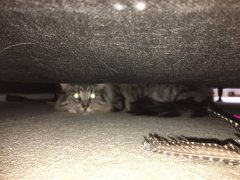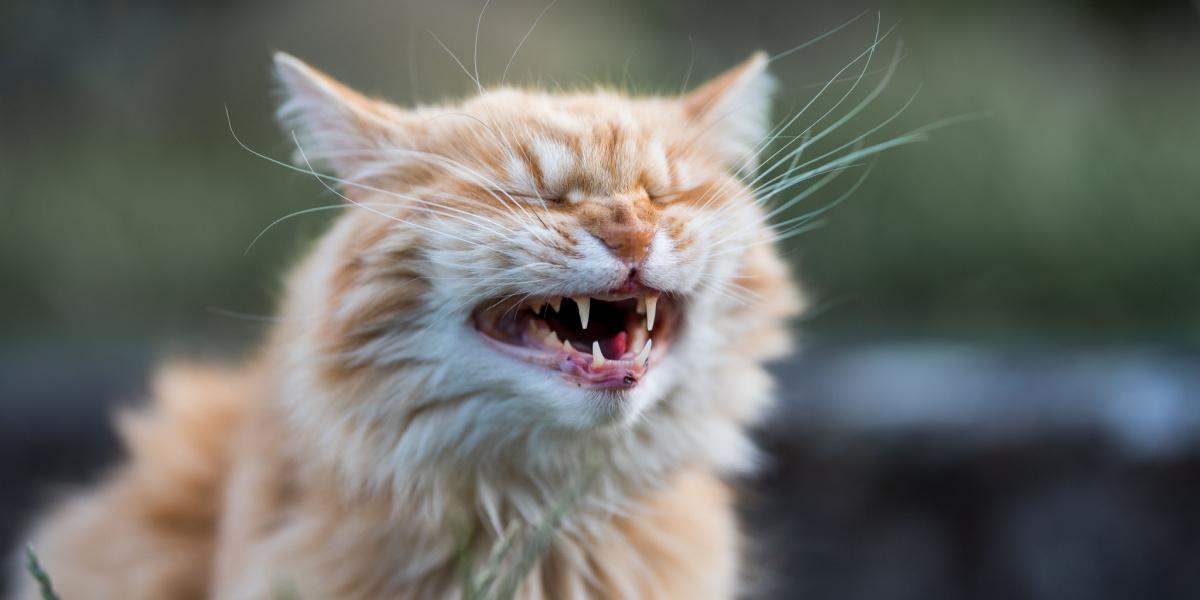
Does your cat get upset when your significant other leaves the room? This is a sign of a very common issue encountered by cat owners – separation anxiety. It also indicates that your cat has latched on to your husband as their primary caregiver.
Cats can become anxious when they are left on their own for long periods of time. This is called separation anxiety, and it can be heartbreaking for both us and our cats. It’s a common misconception that cats are very independent and not sociable animals. In reality, cats crave attention and affection just like the rest of us. Admittedly, they sometimes have a strange way of showing it, but they do!
So what do those mournful cat meows mean? Let’s explore the reason your cat might cry when you or your partner leaves the room.
Signs of Separation Anxiety
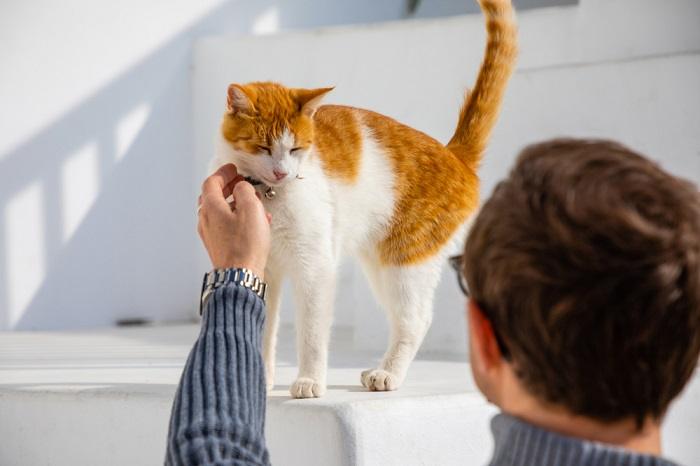
The bond between a cat and their caregiver can be very strong, and in a multiple-human home, cats will often select a particular individual as their favorite.
The bond between us and our cats can be very strong, so it’s natural that our cats may get upset when they are faced with the prospect of being left on their own. However, if your cat is always crying when you or your partner leave the room, this may be a result of excessive attachment, where they don’t cope when they are not in the presence of their primary caregiver who they have formed an attachment with.
If your cat only gets upset when your husband leaves the room or house, it’s a sign that your cat perceives him as their primary caregiver.
They usually express their feelings by excessively meowing loudly at the first sign of us leaving the room. They may try to follow you or your partner out of the door, too. Any cat can experience separation anxiety at any age, and it affects both male and female cats.
Signs your cat has separation anxiety:
- Excessive vocalization
- Urination outside of the litter box
- Defecation outside of the litter box
- Over-grooming
- Destructive behavior in the house
- Hyper attachment to one person
- Carrying toys around in their mouth
If you want to know what your cat is getting up to when you or your husband leaves, you can set up a cat camera or CCTV to monitor them.
Also Read: Why Does My Cat Like My Husband More Than Me?
What Causes Separation Anxiety?
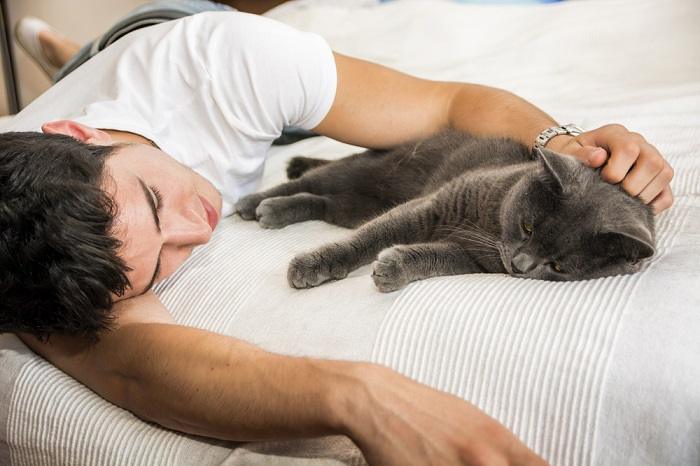
If your cat has become particularly attached to your husband, they may feel insecure and unsafe when he leaves.
Separation anxiety is usually triggered by a big change or a traumatic incident. It could be something like a trip to the boarding kennels while you’re on vacation, being rehomed, or an overnight visit to the veterinarian.
Other things that can trigger separation anxiety include a death of a family member, or addition of a new family member (animal or human), or a big change in their routine in any way. Some cats can develop it for example if their owner was working from home, then transitioned to work in an office.
Certain things predispose your cat to separation anxiety too. These include:
- Living indoors with only one primary caregiver
- Being the only cat in the household
- Being bottle-fed, weaned too early, or an orphan
Also Read: Is My Cat Depressed? Signs, Symptoms & How to Help
How To Diagnose Separation Anxiety?
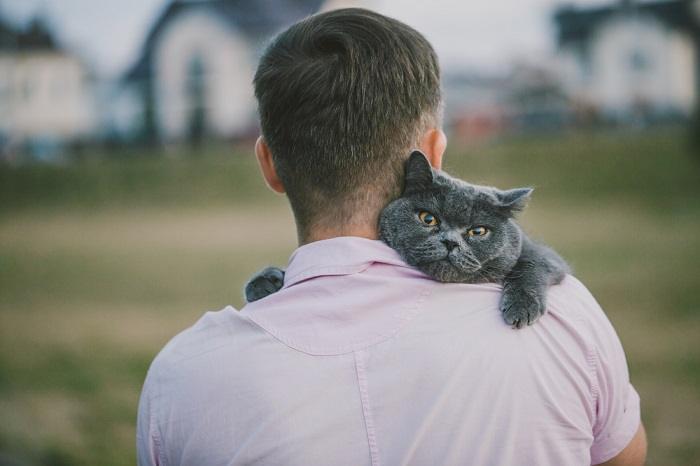
Separation anxiety in cats can present with symptoms also seen in sick cats; it’s important to rule out illness before assuming that separation anxiety is to blame.
The important thing to remember is that although separation anxiety may be a behavioral change, it may also be an indication of an underlying health issue. The first step in diagnosis should be a trip to your veterinarian to rule out any medical problems.
If your cat has a clean bill of health physically, then they will be able to advise you on behavioral issues or refer you to a cat behaviorist. It is important to pay attention to your cat’s behavior and note any changes or anything odd you are noticing for the first time.
Also Read: Top 10 Things Your Vet Wishes You Knew
Treatment for Separation Anxiety in Cats
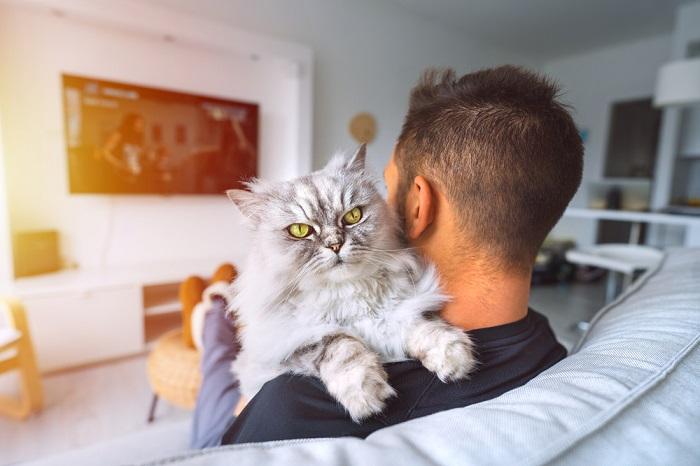
It is possible to resolve separation anxiety.
Most separation anxiety issues can be solved relatively easily through modification of schedules and routines or your cat’s environment. This does depend on how long the issue has been going on and also what triggered the behavior in the first place.
One example of how you can modify your cat’s living environment includes providing enrichment for your cat. There are many ways you can alter your cat’s environment to keep them occupied and amused. Any sort of toy that makes them work or hunt for their food works really well. Cats are instinctive hunters. They thrive off mental and physical stimulation.
You can buy puzzle feeders for them which release food when they are played with. You can also initiate a play session before you or your partner are due to leave. Fishing rod toys are brilliant for stimulating your cat and getting them to burn off some energy. Some cats go crazy for catnip too.
You can leave a television or radio on while you or your partner are out. This will act as some background noise for them and make them feel like there are people in the house and they are not alone. You could consider an interactive Wifi camera. These enable you to talk to your cat when you aren’t at home. Some even dispense treats to your cat!
Your or your partner’s reaction to your cat can also play a big part in reducing separation anxiety. You can reward good behavior by giving your cat attention or a treat when they are relaxed and not trying to engage with you. When you leave and return to your house, be as calm as possible.
Only acknowledge and greet your cat when they are calm and settled. Aim to reinforce good behavior by praising or with treats and completely ignore unwanted behavior.
It’s important to have a rigid consistent routine for mornings and evenings or whatever time you are leaving and returning. This will give your cat cues so they know what is going to happen next and they can follow along with the schedule. This helps as if it is a consistent routine they will be familiar with it all and be able to predict what is coming next so it causes less stress and anxiety.
You can also attempt to alter your cat’s behavior by conditioning them. You can teach them to associate an object with being safe and reassured. For example, you can bring out a special toy or blanket whenever they are calm and relaxed and offer them treats and fuss and cuddle them.
Also Read: 5 Reasons Why Cats Like Shoes So Much
It could be a special toy you have playtime together with on occasion. Eventually, your cat learns to associate that object with happy, calm experiences.
You can then bring it out when you or your partner are leaving so that it is a source of comfort to them. If your cat is very anxious, you may have to take steps to just leave them with the object and sit on the other side of the room, then slowly move further away until you can eventually leave the room, then the house.
Your cat might be showing signs of distress at certain cues, for example, you or your partner putting on their shoes and coat. If this is the case, when you do these things, you can give your cat a treat.
This will condition them to associate the action with a positive thing and will reduce their anxiety. These are gentle ways of behavioral modification that will take a bit of time before you see big results.
There are also some medications your cat can be prescribed by your veterinarian to help with separation anxiety. A full physical exam and assessment is required before any of this happens. If you have any concerns it’s best to get an appointment booked as soon as possible.
You can also purchase special plug-in diffusers that release chemicals called pheromones such as Feliway. These are designed to calm and relax your cat in your home.
Also Read: What Scents Do Cats Hate? This List Might Surprise You
Things To Avoid if Your Cat Has Separation Anxiety

Getting another cat may seem like a solution to separation anxiety in cats, but it could cause more problems.
These things may seem helpful to start with, but unfortunately, they end up causing more problems.
One of these is getting another cat. Some owners think that if they get their cat a companion, they won’t be lonely. Unless your cat has a litter mate or you got more than one kitty together at the same time, the addition of a new cat usually causes more stress and adds to the anxiety experienced by your cat.
Your cat will need to adjust to the new member of the family. They may not get on, and they will need to establish a household hierarchy which may cause conflicts and can be stressful for both cats. This also applies to any other new pet introduced to the household.
Also Read: How to Get Cats To Like Each Other In 10 Simple Steps
The second biggest mistake owners make is to punish their cat for displaying anxious behavior. If you put your cat in a room on their own, confined, that will just add to their distress. If you scold them or shout they will definitely be more stressed.
Cats aren’t showing separation anxiety to be annoying or cause us upset, they can’t help their behavior. So we have to be patient with them and try to help, no matter how upsetting it is for us.
Also Read: Can You Discipline A Cat?
Conclusion

Your cat crying when your husband leaves is a sign of separation anxiety, but with the right knowledge, you can help to resolve this anxiety and give your cat a calmer, happier life.
Separation anxiety or separation-related behavior problems occur commonly in cats. If your cat is displaying signs of separation anxiety, it doesn’t mean you have done anything wrong or that you have an overly anxious cat. Cats are creatures of habit and routine and any disruptions can trigger this behavior. Your cat may cry when your partner leaves the room.
Signs of separation anxiety in cats can be linked to a particular member of the household leaving, even if other people are still around. Therefore, even if you leave your cat with someone at home, you may still notice behavioral changes. There are many solutions to help our cats, and if you are here reading this article already, then your heart is in the right place, and you are a brilliant pet parent.
Also Read: How To Teach Your Cat “No”
Frequently Asked Questions
Why does my cat cry when someone leaves?
Cats form very strong bonds with their primary caregivers. If they become aware they are about to leave the house, this can be distressing for them. They often get upset and vocalize to let their owner know they don't want them to go and to let them know they are upset.
How do I get my cat to stop crying after separation anxiety?
There are many ways you can help your cat if they are showing signs of separation anxiety. Some of the more popular solutions include:
Do cats get sad when a family member leaves?
Yes, your cat certainly can get sad when a family member leaves. Their reaction does depend on how well attached they are to the person. If it is their primary caregiver or the person in the house they are closest to, they can get very upset and distressed.
Do cats get separation anxiety from their owners?
Yes, they do. Lots of people think that cats are independent creatures that don't rely on attention and affection from their owners but the opposite is true! Cats can suffer badly from separation anxiety as they form tight bonds with their owners and miss them when they leave the house.

